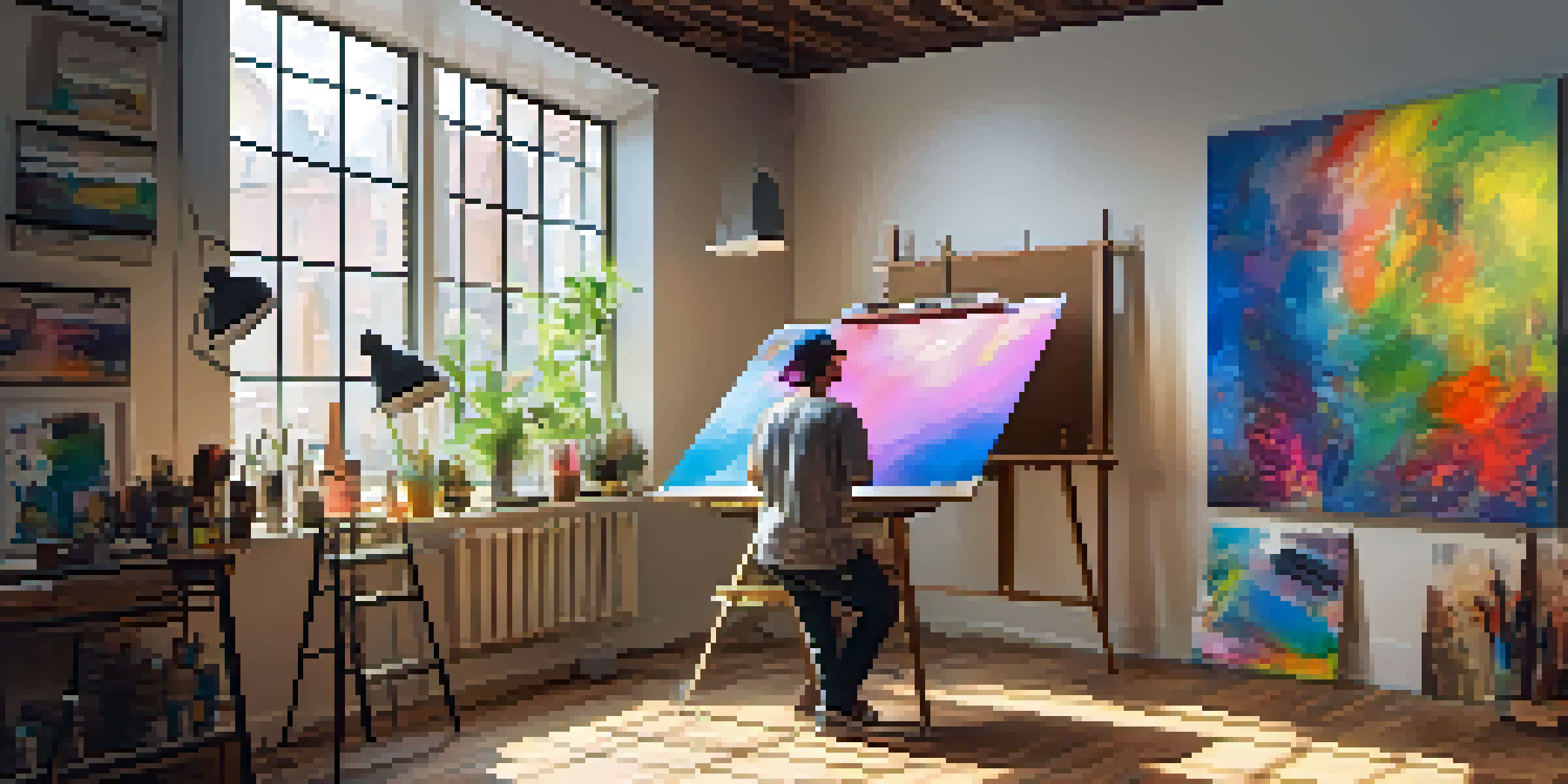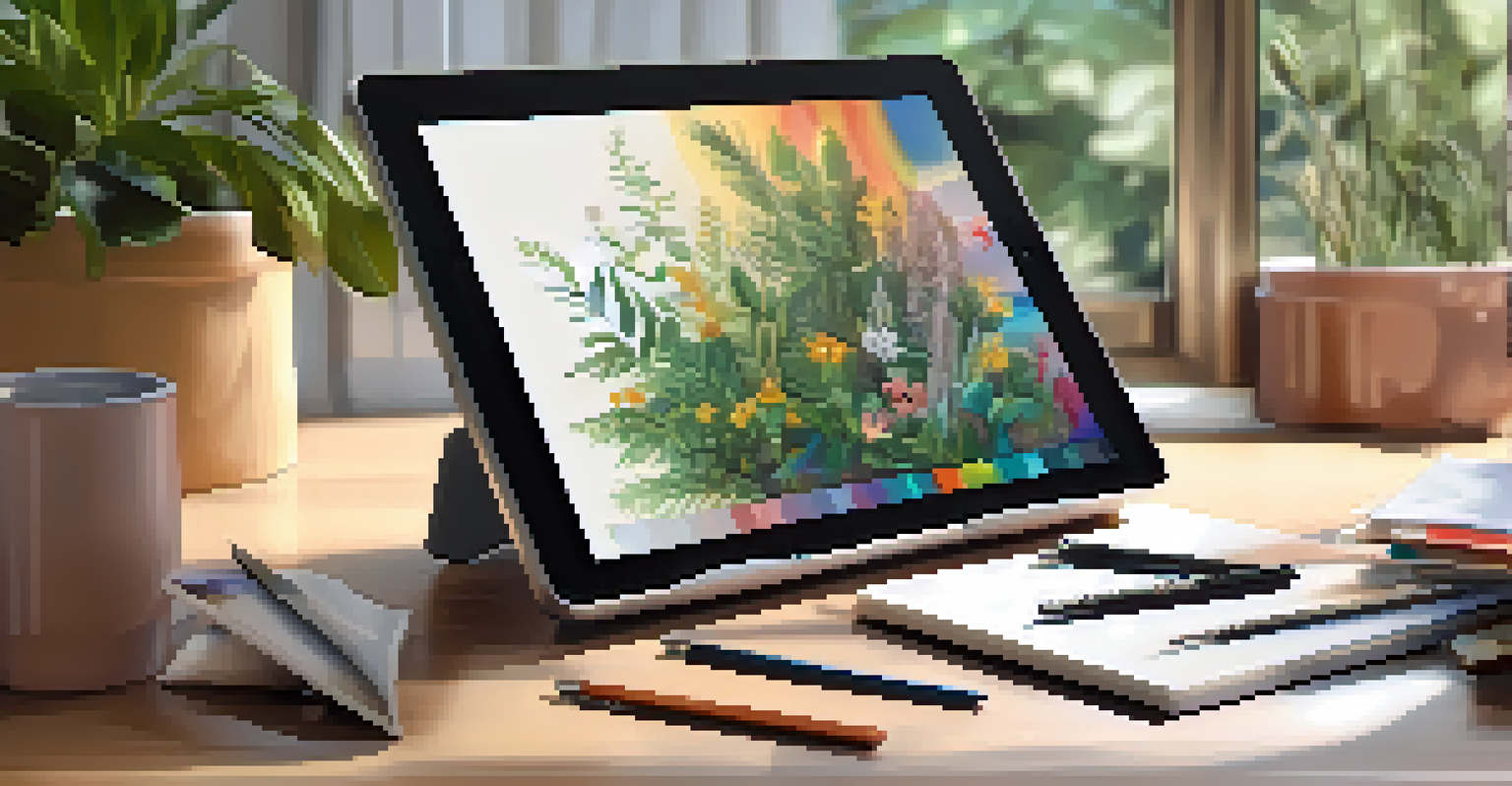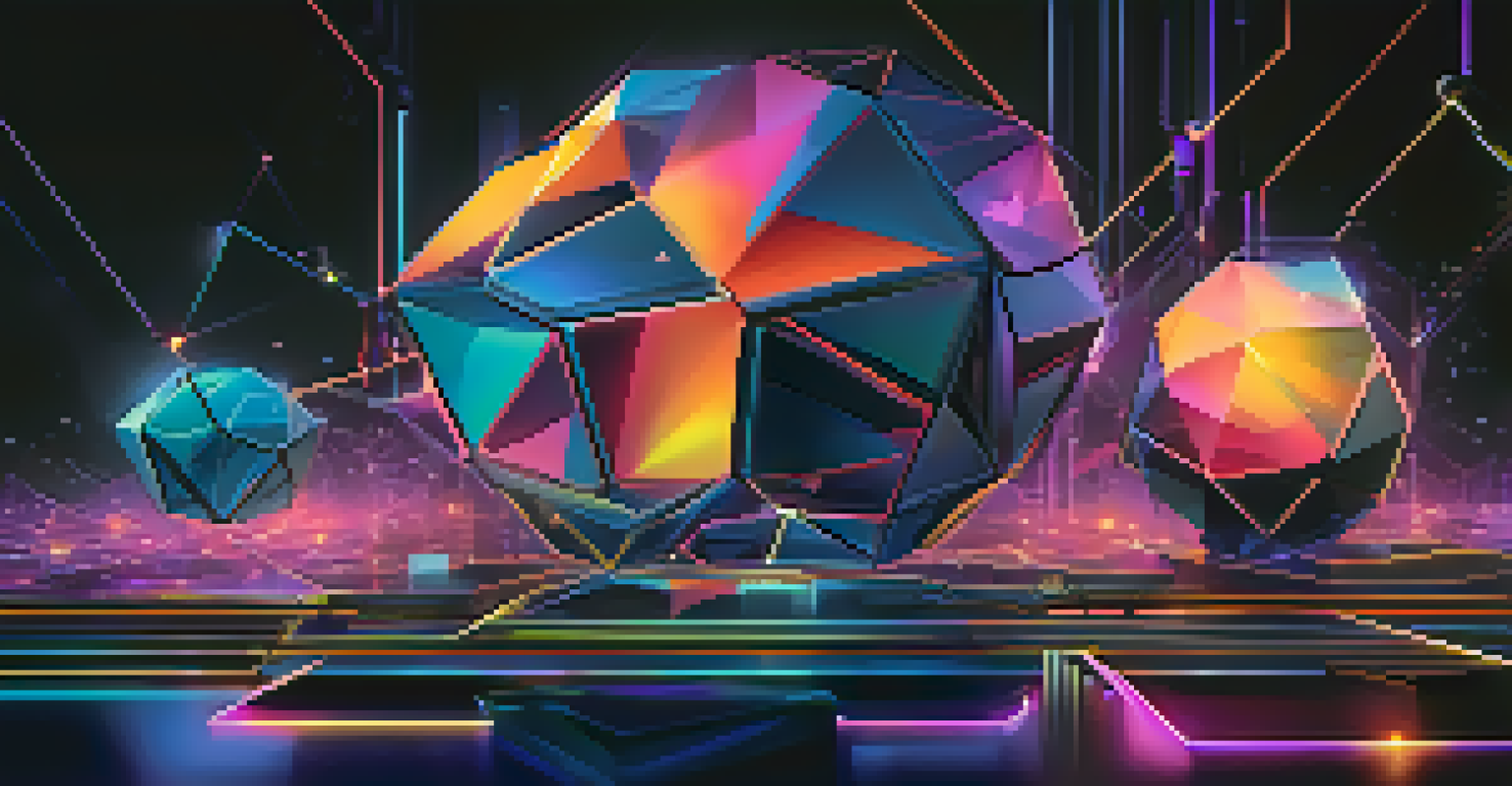Creating NFTs: A Step-by-Step Guide for Artists and Creators

Understanding NFTs: What They Are and Why They Matter
NFTs, or non-fungible tokens, are unique digital assets that represent ownership of items like art, music, or collectibles on the blockchain. Unlike cryptocurrencies like Bitcoin, which are interchangeable, each NFT is one-of-a-kind and cannot be replicated. This uniqueness makes NFTs particularly appealing to artists and creators looking to monetize their work.
NFTs are a way to take control of your own digital life and to engage with the world in new ways.
The rise of NFTs has opened up new avenues for artists to reach audiences and earn income directly from their creations. By leveraging blockchain technology, artists can sell their work without relying on traditional galleries or auction houses. This democratization of art sales allows for a broader range of voices and styles to flourish in the digital space.
Moreover, NFTs often come with built-in benefits for creators, such as royalties on secondary sales. This means that every time the NFT is sold in the future, the original artist can earn a percentage, providing ongoing revenue. Understanding these fundamentals is the first step for any artist looking to dive into the NFT space.
Choosing the Right Platform for Your NFT Creation
With a plethora of platforms available for creating and selling NFTs, choosing the right one can be daunting. Popular choices include OpenSea, Rarible, and Foundation, each offering unique features and user experiences. It's essential to consider factors like fees, ease of use, and the community surrounding each platform.

For instance, OpenSea is great for beginners due to its user-friendly interface and extensive marketplace, while Foundation is often favored by artists looking for a more curated experience. Additionally, some platforms may cater to specific types of art or digital creations, so aligning your work with the right platform is crucial.
NFTs Empower Artists Creatively
NFTs provide artists with a unique way to monetize their work directly, bypassing traditional sales channels.
Taking your time to research and even experiment with a few platforms can pay off in the long run. As your familiarity with the NFT landscape grows, you'll be better equipped to choose a platform that aligns with your artistic vision and business goals.
Creating Your Digital Artwork for NFTs
Creating digital artwork for NFTs can be an exhilarating experience, as it allows artists to express their creativity in innovative ways. Whether you're a painter, digital illustrator, or photographer, the key is to create something that truly resonates with you. Remember, your passion for the piece will shine through and attract potential buyers.
The future of art is not just about creation, but also about ownership and how we want to share that ownership.
Consider experimenting with different styles and formats, as NFTs can represent a wide range of media, including animations, 3D models, and even music. The more unique and original your work, the better chance it has of standing out in a crowded marketplace. Using tools like Adobe Photoshop or Procreate can help you bring your artistic vision to life.
Once you've created your masterpiece, save it in a suitable digital format. Most NFT platforms support formats like JPEG, PNG, and GIF, but be sure to check the specific guidelines of your chosen platform to avoid any hiccups during the minting process.
Minting Your NFT: The Technical Process Explained
Minting an NFT is the technical process of turning your digital artwork into a unique token that lives on the blockchain. This process involves uploading your file to your chosen NFT platform, where you'll also need to fill out details like the title, description, and any royalties you wish to set. It’s this step that transforms your artwork into an NFT, making it verifiably owned and tradable.
Depending on the platform you choose, the minting process can vary slightly. Some platforms allow for instant minting, while others might require a few additional steps. It’s important to be patient and take your time to ensure all the details are correct, as this will affect how your NFT is perceived in the marketplace.
Choosing the Right NFT Platform
Selecting the appropriate platform for minting and selling NFTs is essential for aligning with an artist's vision and audience.
Don’t forget to consider the gas fees associated with minting, which are transaction costs on the blockchain. These fees can fluctuate based on network traffic, so be strategic about when you decide to mint your NFT to maximize your investment.
Setting Up a Digital Wallet to Store Your NFTs
Before you can mint and sell your NFTs, you’ll need a digital wallet to store them securely. Think of your wallet as a bank account for your digital assets, where you can manage your NFTs, cryptocurrencies, and any other blockchain-based items. Popular wallet options include MetaMask, Trust Wallet, and Coinbase Wallet, each offering different features and security levels.
Setting up a digital wallet is usually straightforward: download the wallet app, create an account, and follow the prompts to secure your wallet with a strong password and backup phrases. It’s crucial to keep these details safe, as losing access to your wallet could mean losing your NFTs forever.
Once your wallet is set up, you’ll need to link it to your chosen NFT platform. This connection allows you to manage your NFTs directly from the platform and facilitates transactions when you buy or sell your digital assets. Taking these steps ensures you’re ready to enter the exciting world of NFTs.
Marketing Your NFT: Strategies to Attract Buyers
Once your NFT is minted, it's time to shift gears and focus on marketing. Just like you wouldn’t launch a book without a promotional plan, your NFT needs visibility to attract potential buyers. Leveraging social media platforms like Twitter, Instagram, and TikTok can be immensely effective for showcasing your work and connecting with your audience.
Consider creating behind-the-scenes content that showcases your creative process or sharing insights about what inspired your piece. Engaging storytelling can captivate potential buyers and create a deeper connection to your artwork. Building a community around your work can also generate interest and loyal followers.
Marketing Strategies for NFTs
Effective marketing through social media and collaborations can significantly enhance visibility and attract buyers to your NFTs.
Collaborating with other artists or influencers in the NFT space can further amplify your reach. By tapping into their networks, you can expose your work to a broader audience, enhancing your chances of making sales. Remember, the goal is not just to sell but to create lasting relationships with your collectors.
Navigating the Future of NFTs: Trends to Watch
The NFT landscape is constantly evolving, and staying informed about emerging trends can give you a competitive edge. One trend to watch is the increasing integration of NFTs in gaming and virtual reality, where digital assets can enhance user experiences and add value to gameplay. This intersection of technology and art is opening up exciting new possibilities for creators.
Additionally, the concept of fractional ownership is gaining traction, which allows multiple collectors to own a share of high-value NFTs. This could democratize access to expensive pieces of digital art, making it easier for more people to participate in the NFT market. Keeping an eye on these trends can help you adapt your strategies and explore new avenues for creativity.

As the NFT space continues to grow, so does the conversation around sustainability and ethical practices. Artists and creators are being encouraged to consider the environmental impact of minting NFTs and explore platforms that prioritize eco-friendly practices. Being mindful of these issues not only enhances your brand's credibility but also resonates with socially conscious buyers.